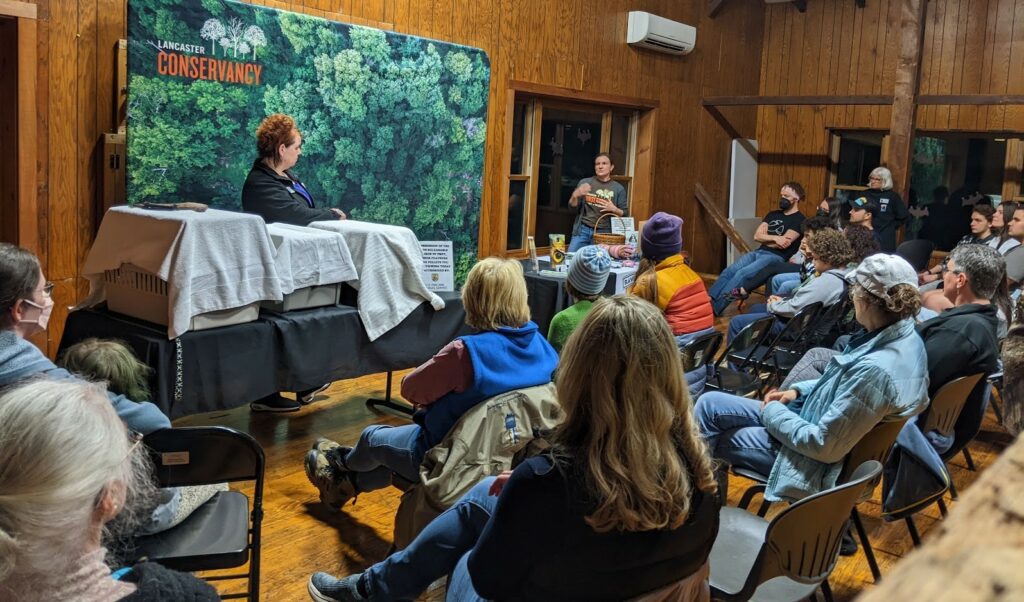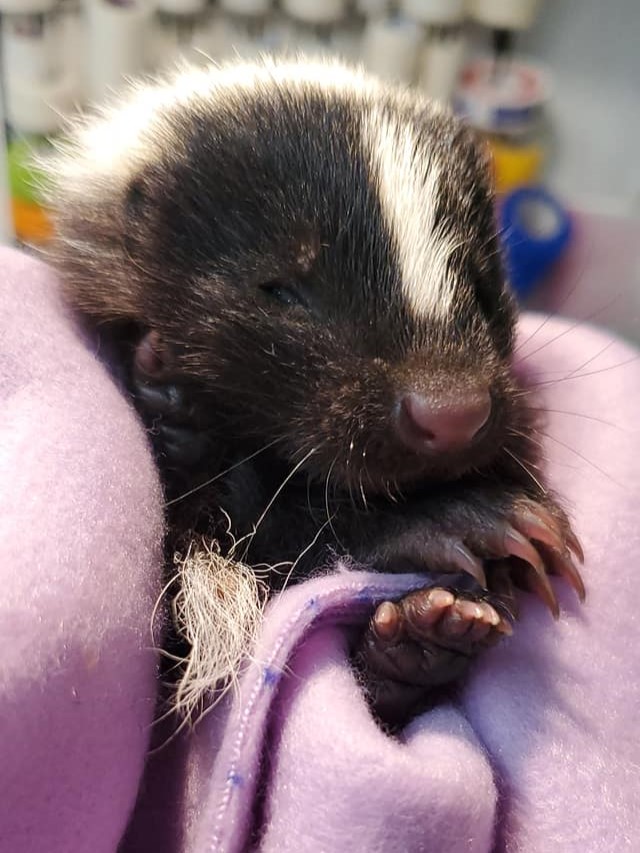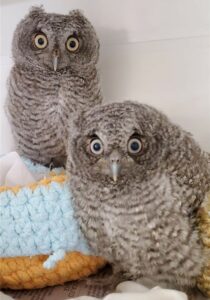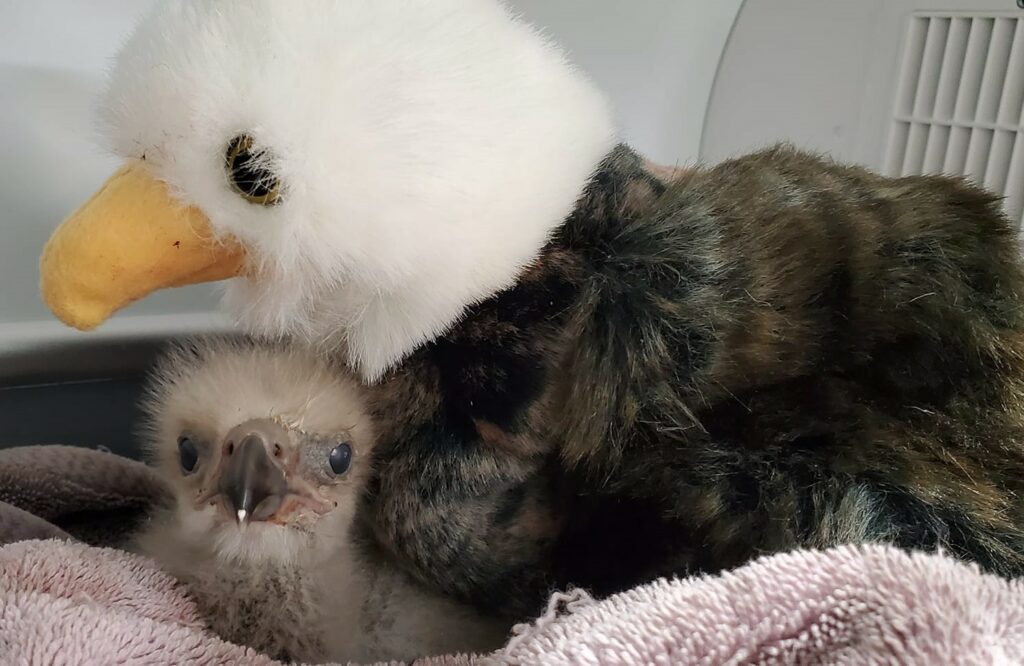By Peggy Eppig, Lancaster Conservancy Educator
Spring is here, and despite some cold days and nights still left to endure, our native wildlife are preparing for nesting and denning and the arrival of babies! Once the season is well underway, you may encounter fledglings, pups, kits, fawns, cubs, and owlets in the woods, wetlands, or meadows on any of our nature preserves.
By the time we see them out and about, most wildlings are fully capable of taking care of themselves, but wild parents may be nearby keeping an eye on them. Keep your distance, enjoy your sightings, but count on a worried and protective mom nearby. In most cases, you should turn around and let baby animals be.
Tracie Young and volunteers from Raven Ridge Wildlife Center recently presented a program at the Russo Barn at Climbers Run Nature Center on what to do when you encounter wild animals that may be injured, abandoned, or sick.

Raven Ridge presentation at Climbers Run Nature Center. Photo by Peggy Eppig
What do you do when you need to move a wildling to safety – and keep it safe – until you can deliver it to a qualified rehabilitator? Tracie’s advice is simple: keep a lidded carboard box, a pair of gloves, and a blanket or old coat handy.

Photo by Tracie Young, Raven Ridge Wildlife Center
If you are absolutely sure a baby animal needs to be handled, remember that talons, fangs, and teeth are especially sharp in young ones. Gently place a blanket or towel over the baby, scoop it up with gloved hands, and place it in the carboard box. Secure the lid. Darkness will keep the baby calm.
Contact the rehabilitator before moving a baby animal. When moving and transporting a wildling, don’t play loud music in the car, don’t take selfies, and don’t feed it. Maintain a stress-free environment while getting your baby to a qualified person who can evaluate and treat it properly.
Raven Ridge Wildlife Center is our local licensed rehabilitation center, and as we prepare for baby season here at Lancaster Conservancy, our land stewards and land managers know to call Raven Ridge or our local Pennsylvania Game Commission warden should they find animals that need help. If you find a baby animal you think needs help, you can call Raven Ridge at (717) 808-2652.
But what if it’s just a matter of moving babies to safety, no emergency wildlife services needed?
I recently had this happen with a pair of great horned owl babies when a hollow tree in my yard came apart in a windstorm. I found two flightless owlets hunkered under a bush. Following Tracie’s advice, I built a new nest with a wooden fruit crate and, with help from my neighbor, hoisted it up into a neighboring pine. Inside, the two owlets peeped through the slats with their wide yellow eyes, snug in a pile of pine needles and sticks. The next morning, I could see mother owl sitting on the crate.

Owls. Photo by Tracie Young, Raven Ridge Wildlife Center
Tracie explained that knowing how to recreate a nest is a bit of an art, and knowing how different wildlife species construct and site their nests is helpful. Grey and flying squirrels construct nests called dreys, and mom will have made several nearby. Putting babies in a box near a damaged or fallen nest will have mom coming in no time to move her babies to another drey.
In the case of baby rabbits, try not to move them from an exposed nest. Cover them as well as you can and wait to see if mom will relocate them. She can’t find them if they are moved because when they are very young, they have no scent. It’s a good idea to check before you do your first mowing of the year and mark any rabbit nests to mow around.
Tracie says not to worry about replacing flightless baby songbirds into nests. The old tale that momma birds will not feed them if they “smell” human scent is wrong. Songbirds have no sense of smell, but they are keen to respond to their baby calling for food no matter what. Whether returned to the original nest or into a clever strawberry box look-alike, storm-thrown babies will be cared for once the parents hear their cries.

Baby eagle with a stuffed eagle toy. Photo by Tracie Young, Raven Ridge Wildlife Center
Thanks to our partner in conservation, Raven Ridge Wildlife Center in Washington Boro, for a great learning experience, and we can’t wait to have you back to learn more!
Be sure to visit Raven Ridge’s website to learn more about wildlife rehabilitation, and check our events for when Tracie Young and the crew from Raven Ridge visit again!









